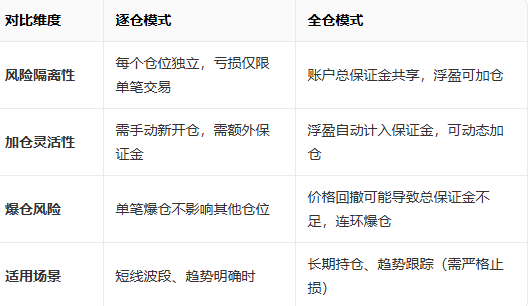Feasibility analysis and risk warning of high-leverage isolated rolling strategies
I. Strategy principles and mathematical models
Analysis of the yield formula
The yield formula mentioned by users (yield = leverage × price change) holds under ideal conditions. For example, 100x leverage + 1% increase = 100% yield, theoretically doubling the principal. However, it is important to note:Ignoring transaction costs: fees, slippage, funding rates, etc., will erode actual returns.
Unilateral market assumptions: continuous unilateral rise/fall is required; in reality, markets are often volatile or trend-reversing.
The theoretical limit of rolling compound interest
If 100% returns are achieved consecutively N times, the principal grows by (2^N) times. For example:10U → 20U (1 time)
20U → 40U (2 times)
After 10 times, the principal reaches 10240U, but capturing a 1% increase accurately 10 times in a row has an extremely low probability.
II. Core differences between isolated margin and full margin models

III. Potential risks of rolling strategies
The unsustainability of continuous profits
Market trends are difficult to sustain in a unilateral manner; frequent switching between long and short positions is required, making operations challenging.
For example: BTC's volatility throughout 2023 was only about 50%, with an average daily increase of 1% occurring only 12 times.
The cumulative effect of high leverage
Each rolling position incurs higher risk: if the principal doubles and then loses 50%, the actual loss is twice the initial principal.
Example: 10U→20U→10U (two losses of 50%), principal shrinks by 50%.
Market microstructure risk
Large orders can easily trigger price slippage, especially in low liquidity coins.
Platform risk controls may limit frequent trading, such as Coinex's anti-manipulation mechanism for high-frequency trading.
IV. Practical application suggestions
Layered risk control system
Single position control: not exceeding 10% of total capital to avoid excessive losses in a single transaction.
Stop-loss mechanism: Set dynamic stop-loss (e.g., ATR channel breakout stop-loss) instead of relying on profit and loss ratios.
Transaction cost optimization
Choose low-fee platforms (e.g., Bybit's isolated margin fee is 0.025%), to avoid cost erosion of profits.
Avoid frequent opening and closing of positions to reduce funding rate accumulation (perpetual contracts require payment of funding rates for long and short positions).
Psychological and discipline management
Establish a trading journal to record the reasons for profit and loss on each trade.
Set a maximum drawdown threshold (e.g., 30% of total capital) to trigger a pause in trading.
V. Discussion on alternative strategies
Laddered position increase method
Divide the principal into 3-5 tiers, gradually building positions according to price ranges to reduce single transaction risk.Example: 10U divided into 5 tiers, 2U per tier, one tier is added for every 2% drop in price.
Cross-species hedging
Simultaneously go long/short on coins with low correlation (e.g., BTC and DEFI tokens) to diversify risks.Need to pay attention to changes in correlation, which can be monitored through
The above is a personal analysis for reference only!
$BTC$ETH